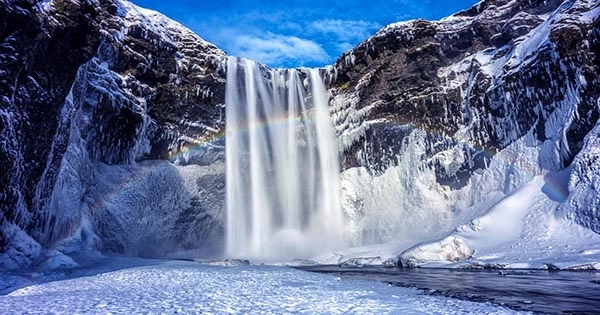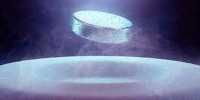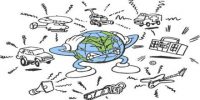Water molecules can coalesce into bigger forms when it is extremely cold and still stay liquid. There are two ways they can accomplish this, producing separate liquids with vastly differing densities. The forms of these supermolecules and what they individually reveal about the makeup of each liquid have been clarified by a recent study.
More than 30 years ago, the possibility of two liquid phases for water considerably below its freezing point was put up, but it was impossible to demonstrate at the time. Two years ago, the notion could be supported by modeling thanks to a significant investment in computer time.
However, the specifics of how the water organizes itself during these phases remained unclear (unlike the water itself, which must be exceptionally pure to avoid freezing). New research published in Nature Physics now offers some explanations.
Given that it just contains two elements and has just three atoms per molecule, water is incredibly complicated. If ice weren’t so common, it would be hard to imagine that it is denser in its liquid phase than in its solid phase, which allows ice to float.
When water is cooled below the freezing point but doesn’t really freeze, things become much more complicated. The fact that this is possible (if the water is clean and the container is smooth) makes for fantastic demonstration movies, but it is unclear what actually occurs at the molecular level in “supercooled water” when temperatures decrease.
The formation of high- and low-density liquid phases of supercooled water has been observed by scientists. These are distinct from the heavy water that is created when some of the regular hydrogen in water is replaced by deuterium atoms. The density of the water depends on how the molecules are arranged; the composition of the water is the same.
The high-density form of supercooled water, according to the paper, can cause molecules to entangle themselves in the manner of a pretzel (officially a trefoil knot) or the linked rings that are popular among amateur magicians (Hopf link).
According to the article, “the system is able to build knots and connections to simultaneously minimize its volume and maximize the number of bonds in the network.” Unentangled rings of water molecules make up the low-density liquid phase, which is why it can be so light. This is consistent with earlier theories.
According to University of Birmingham student Andreas Neophytou, “This revelation has presented us with an entirely fresh viewpoint on what is now a 30-year-old research subject, and will hopefully be only the beginning.”
Sadly, since we have a long way to go until we can observe the water molecules in a real experiment, the conclusions are still based on computer modeling to reproduce measures like density at particular pressures and temperatures. The authors leveraged the fact that at these temperatures, water self-assembles into colloids, particles made up of hundreds of water molecules, to simplify the computations. These colloids move more slowly than individual molecules, which are difficult to describe since they move so quickly even at subzero temperatures.
According to Dr. Dwaipayan Chakrabarti of the University of Birmingham, “This colloidal model of water gives a magnifying glass into molecular water, enabling us to decode the secrets of water regarding the tale of two liquids.”
“One by one, the secrets of water are revealed! Imagine how lovely it would be to be able to peer inside the liquid and watch the water molecules flicker, dance, and exchange partners, reorganizing the hydrogen bond network. This dream may come true if the colloidal model for water that we suggest is realized “Francesco Sciortino, a professor at Sapienza University of Rome and one of the authors of the original research that predicted the two phases, said.















